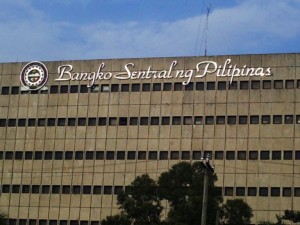BSP likely to slash interest rates anew to curb strong peso—Citibank

“BSP had already used opportunities of a strong risk-on environment to cut rates amidst still robust growth. In the wake of QE3 (US Federal Reserve’s third round of quantitative easing), we’ve seen statements by BSP warning the use of more macro-prudential tools to manage capital flows, but if inflation were to moderate in the coming months, we wouldn’t rule out a greater incentive for one more rate cut,” Hong Kong-based Filipina Citi managing director Johanna Chua said in a press briefing on Tuesday.
The Harvard-educated Chua said the BSP might slash key interests by another 25 basis points or pursue other measures like a reduction in the reserve requirement on banks or the release of funds locked up in special deposit accounts.
The BSP’s overnight borrowing rate is currently at 3.75 percent, already at a record-low level.
Chua said the US Fed’s QE3—a system of bond buybacks meant to boost liquidity without having to lower the targeted interest rate which is now at near-zero level—had a powerful impact on Asian markets so far because it was sanctioned at a time that growth risks in Asia were far higher compared to previous QE episodes.
“With a more positive risk tone and prolonged low rates, capital inflows could be particularly strong in countries with strong fundamentals and higher yields,” Chua said.
Article continues after this advertisementShe said the BSP would likely cap any significant local currency appreciation, explaining that “tolerance” for foreign exchange outperformance would be less this time because of weaker growth and exports prospects and because inflation has not been a concern.
Article continues after this advertisementMonetary easing was thus seen as a way of dealing with capital inflows in lieu of capital controls, Chua said.
The economist added that the Philippines must figure out a way to liberalize “to get some of the money out,” noting that a lot of regulations were designed in the past when the country was facing US dollar shortfalls. “If anything, Philippines almost has excessive reserves,” she said, noting this was a “symptom of success” but likewise of “over-conservative balance sheet management.”
The country’s gross international reserves (GIR) of about $80 billion have—for the first time in history—exceeded the foreign debt stock of about $62.5 billion as of the end of June. The government has turned from a long-time net borrower into an international lender, recently contributing $1 billion of its GIR to the International Monetary Fund’s funding pool to help the debt-strapped eurozone.
The Philippines must ensure efficient use of capital inflows. In general, how central banks would respond to QE3 would depend on several factors, one of which would be the extent this could fuel liquidity-driven credit boom or asset price risks, Chua said.
In the case of the Philippines, she said: “I still think there’s generally a sense we don’t have any widespread asset bubble yet.”
Southeast Asia recently saw an investment revival and Chua said she was hoping this would benefit the Philippine manufacturing sector. “Hopefully, at some point, Philippines will be part of a manufacturing chain. It’s a shame (that we’re not) because we have a labor surplus,” she said.